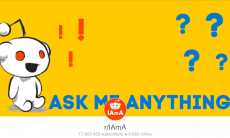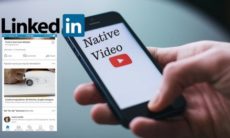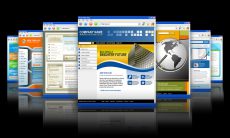Congratulations. You’ve won! You show up on the first page when the world searches for the goods or services you offer. Maybe you’ve even reached the peak and rank first for valuable keywords in your industry.
With all that hard work behind you – the SEO and analytics, the content strategy and content development – you must be leaning back, feet up on your desk, maybe even smoking a cigar…
No? Why in heavens not? Oh, right: traffic doesn’t pay the bills.
Customers pay the bills. More specifically, profitable customer engagements pay the bills. Which is why focusing solely on SEO and traffic metrics is a mistake. Traffic isn’t the end goal. It is, quite literally, the top of your sales funnel. Just as important is what happens once you’ve attracted all that traffic.
Or, to put it in more traditional terms: what really matters is your efficiency at moving prospects from the top of the funnel, through the sales process, to the end of the funnel and conversion. You can’t do that if the top of your funnel is empty, but prospects do not equal profits.
So let’s talk about how your website can help turn the attention your SEO is earning you into clients. We’ll start with some basics and, may go deeper into subjects like conversion rate optimization in future articles.
Dedicated Landing Pages
You attracted them with something specific, so deliver something specific – without distractions.
SEO doesn’t work in generalities. It works because someone has searched for something quite specifically. That “something” has to be front and center on the page they land on, or they will head elsewhere immediately.
For example, if they’ve found you because you’ve promised a better mousetrap, the page they land on had better be all about that mousetrap: how it’s better, why it’s better, and the impact it will have on their lives. This page is not your opportunity to promote, say, your pest control services, or to tell them how to know the difference between carpenter ants and termites. That all belongs on other pages. This page has to deliver what you’ve promised.
Of course, some will take the valuable information you’ve offered and you’ll never hear from them again. Others will find what you’ve said so well aligned with their needs that they’ll take the next step. That next step might be calling you or signing up for your email newsletter, but it all starts with a landing page that fulfills the promise you’ve made.
Not Too Much, Not Too Little
Despite the reality that a significant portion of your traffic will be “one and done,” we want to do all we can to keep the transaction from being all give and no take. Your goal isn’t to publish valuable information for free. Your goal is to gain trust and build or strengthen a relationship by publishing valuable information. You’re not charging anything, but that’s quite different from free.
Which means your landing pages have to include a strong call to action. This isn’t the time to ask for a home address, how big their house is, or even what other pest-related problems they’re having. This is the time to offer something simple with a very small obligation – an offer of information in exchange for permission to stay in touch. In other words, give us your email address and we’ll give you this illustrated guide to the Top Five Places Mice Are Sneaking Into Your Home.
You’ll lose some folks, of course, but that’s OK. Our goal isn’t to attract everyone. Our goal is to attract those who are feeling a pain strongly enough that they’re motivated to seek out a solution.
Create Comfort
Our last piece of advice for this introduction to online lead conversion is creating comfort. If your site doesn’t look professional, that’s going to be a strike against you. If your site isn’t easy to use, that’s going to be another strike against you.
Beyond simply looking professional, you also need to create trust. Everyone says their mousetrap is better. Why should these folks, who have just met you, believe you instead of everyone else?
Facts will help. If you have scientific research proving your design catches more mice more quickly, use it. Understand, though, that consumers are skeptical. Your website isn’t a peer-reviewed academic journal. For all they know, the “scientific research” was conducted by your Uncle Morty in his garage.
Client testimonials are certainly a step up but again, it’s a skeptical world. Does your audience have any way of finding out whether there really is a “J. Doe” from Dubuque, IA? And did “J. Doe” really say such glowing things about your product?
That’s where social media comes in: having a healthy number of positive comments, reviews, likes, etc. is a signal that people look for as they evaluate you and your company online. About the only thing more productive are personal recommendations from their own friends and followers.
Of course, these aren’t the only elements that factor in to how well your website converts – we haven’t talked at all about the power of a strong offer – but examining your website with these ideas in mind should give you a sense of how well your site is performing and where it can be improved.







